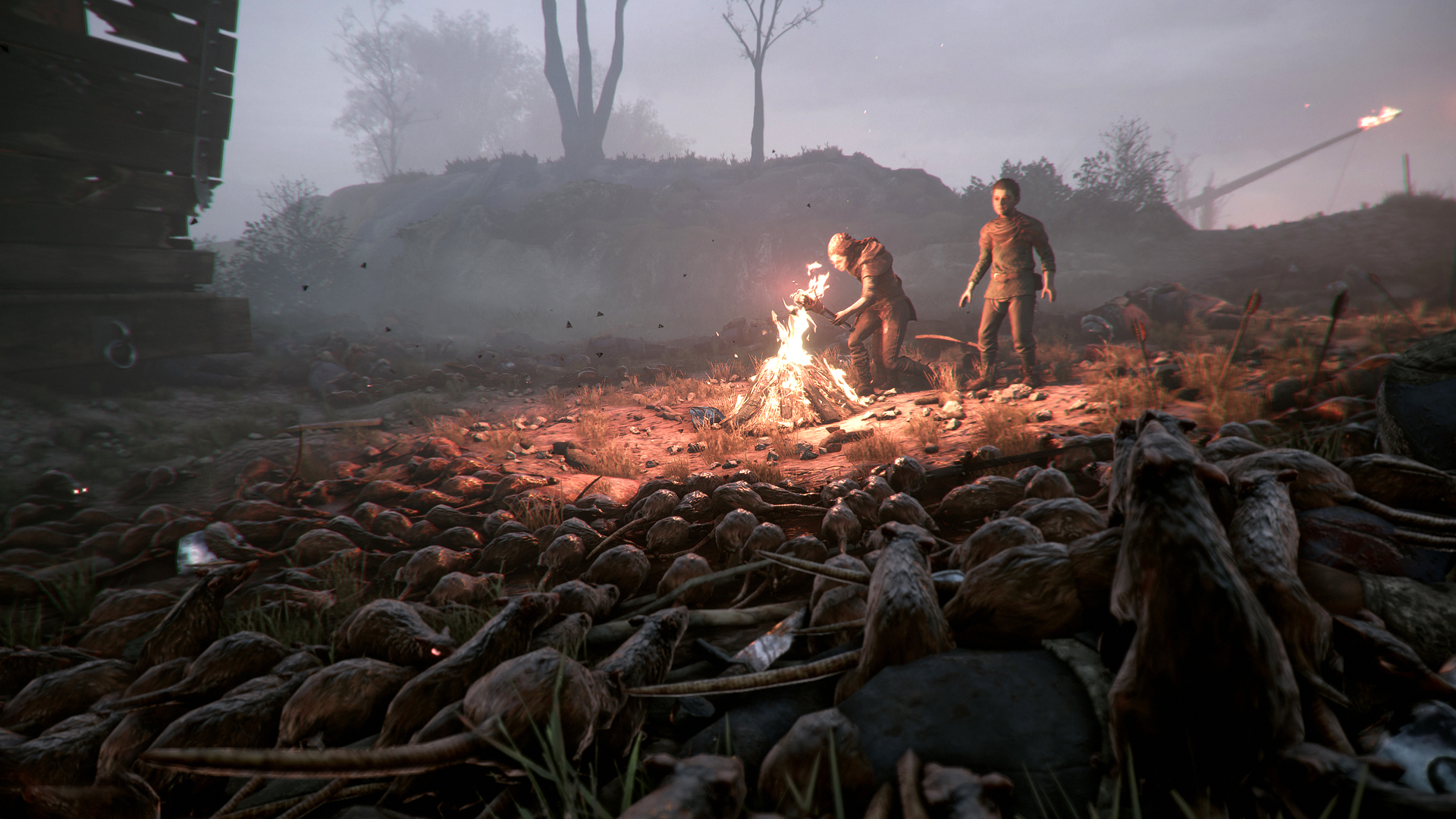How ‘A Plague Tale: Innocence’ Makes Diseased Rats So Terrifying
By Giancarlo Valdes
LOS ANGELES (Variety.com) – In most games, rats don’t pose much of a threat. At worst, they’re in the background in gritty urban environments or cheap fodder for guns and spells. With “A Plague Tale: Innocence,” however, they’re a nightmarish manifestation of a deadly disease — and if you’re careful, you can use them to your advantage.
Coming to PC, PlayStation 4, and Xbox One in 2019, “A Plague Tale: Innocence” is an action-adventure game set in 14th century France, a dark time for protagonists Amicia and her little brother Hugo. They lost their parents to the ruthless Inquisition, forcing them to survive on their own. To top it off, five-year-old Hugo is suffering from a strange illness, and ravenous rodents are spreading throughout the country, eager to devour anything that’s in their way.
As the teenage Amicia, you can’t fight or destroy them. You either avoid the rats altogether or redirect their hunger elsewhere.
“A Plague Tale: Innocence” is developer Asobo Studio’s first original project since releasing the racing game “Fuel” in 2009. During an interview with
Variety
at E3 2018, lead designer Kevin Choteau explained that the team wanted to make an emotional character-focused game, citing “The Last of Us” and “Brothers: A Tale of Two Sons” as major inspirations. They decided to set it in their own backyard of Bordeaux, France, and found that it was fertile ground for the kind of story they wanted to tell.
“We started to look at the history of our region. In the 14th century, there was the Hundred Years’ War in the southwest of France against the English. … At the same time, the Black Plague started to arrive, and it was the end of the Great Inquisition,” said Choteau. “So it was the crossway of everything, the worst parts of humanity. It was the perfect setting to put our children in.”
Despite its historical roots, “A Plague Tale” isn’t meant to be a realistic medieval game. Choteau described it more as a dark fairy tale, one that plays around with supernatural elements. Amicia, for example, can craft items and ammo for her slingshot using her knowledge of alchemical recipes. And the diseased rats represent a different version of the Black Plague, with their exact origins being a key part of the mystery. They act more like zombies: not only because they consume any piece of flesh they see, but also because they travel in swarms.
Choteau said up to 5,000 rats can be on screen at once, ebbing and flowing like a living tidal wave. The only thing they’re afraid of is fire. They’ll immediately escape to the shadows if they’re near any kind of light source, so you can carve a path through them by carrying a torch or igniting braziers. Alternatively, if you see enemy soldiers around, you can take out their lanterns with your slingshot and watch thousands of rats feast on their newfound treat, picking the bones clean.
But this comes at a cost: If they’re consumed, you won’t be able to scavenge crafting materials from the soldiers’ bodies. Manipulating the rats, and deciding whether to use them against your enemies, will be an ongoing struggle.
“When we were working on the pitch [for the game], we tried other supernatural things, like smoke … . It was not as grounded or as fleshy as the rats. But the rats were technically the most difficult thing [to make],” said Choteau. “We’ve done a lot of R&D and engineering to have those 5,000 rats displayed on the screen at the same time. It always surprises me — even though I designed their behavior and know how they work — to see how natural they can feel, with the throng moving and spreading.”
Between the rats and the soldiers from the Inquisition, Asobo is putting Amicia and Hugo through hell — and that’s the point. Ultimately, “A Plague Tale” is about family, and how those relationships are tested in times of great distress. Their estrangement from one another adds another layer of complexity, as Hugo’s sickness kept him away from his sister and father for most of his life (with the mother taking care of him).
“They’re on the road, they don’t know anything [about what’s going on], they don’t know each other … and now they’re facing this world that seems to be so much more brutal than anything they’ve ever seen,” said Choteau.

